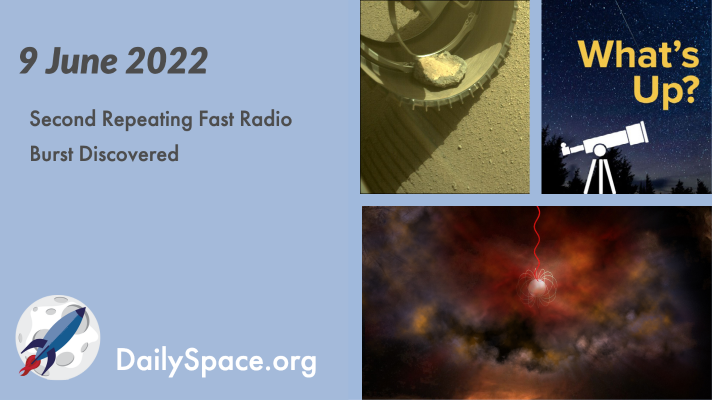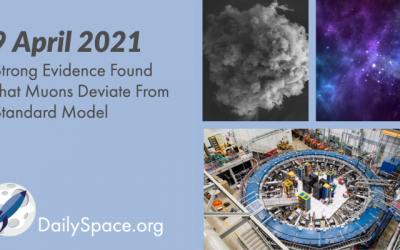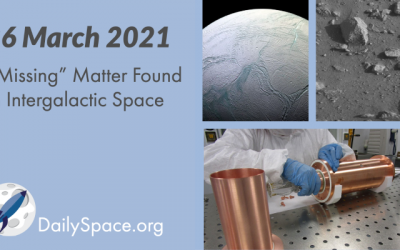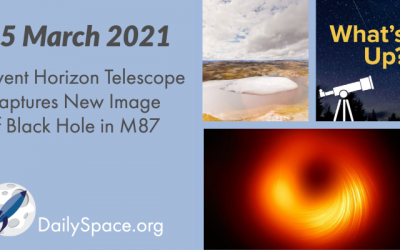
Second Repeating Fast Radio Burst Discovered
A second repeating fast radio burst was detected in 2019 by China’s FAST observatory and confirmed in 2020 by the Very Large Array. This latest discovery raises the possibility that there are two different types of FRBs. Plus, a SpaceX commercial launch, mission updates, neutron stars, and this week’s What’s Up.
Catch us on NowMedia TV
Saturday 11pm Central / midnight Eastern
Sunday 10pm Central / 11pm Eastern
Watch live on these stations: Houston 21.10, Atlanta 22.10
or tune-in on Apple TV, Roku, YouTube Live, or Amazon Prime
Strong Evidence Found That Muons Deviate From Standard Model
Fermilab released the first results of their Muon g-2 experiment this week, and the fundamental particles don’t behave as predicted by the Standard Model of Particle Physics. Plus, dust, more dust, Martian water (again), and a review of Packing for Mars by Mary Roach.
Not Surprising Anyone, Satellite Proliferation Contributes to Light Pollution
A new study examined the effects of recent increases in the number of space objects orbiting Earth and found that the proliferation of satellites contributes to a nearly ten percent increase over natural lighting of the night sky. Plus, Mars, Uranus, Neptune, ancient Earth, volcanoes, and our weekly What’s Up segment.
Rocket Roundup for April 7, 2021
In this week’s Rocket Roundup, host Annie Wilson presents another Starlink launch from SpaceX, another OneWeb launch from Arianespace, the very foggy SN11 test flight, and a Chinese launch. Plus, this week in rocket history, we look back at STS-1, which launched from the Kennedy Space Center on April 12th, 1981.
The Tibet ASγ Experiment Finds Evidence of PeVatrons
Using substantial ground arrays and underground muon detectors, the Tibet ASγ Collaboration has captured evidence of ultra-high-energy gamma rays that are thought to be the result of nuclear interactions between cosmic rays and interstellar gas. Plus, OSIRIS-REx, Ingenuity, InSight, comet 2I/Borisov, and things getting hit (or not) by other things.
“Missing” Matter Found in Intergalactic Space
New research looking to explain the “missing” portion of baryonic matter in the universe managed to locate the material lurking in intergalactic space as hot, low-density gas. Plus, supercontinents, Enceladus, and weird earthquakes.
Event Horizon Telescope Captures New Image of Black Hole in M87
The Event Horizon Telescope collaboration released a new image yesterday that shows the black hole in M87 once again, but this time, with new details. Using polarized light, the team was able to capture photographic evidence of magnetic fields. Plus, Jupiter’s winds, baby stars, fossilized plants under Greenland’s ice, and our weekly What’s Up segment.


 We record most shows live, on Twitch. Follow us today to get alerts when we go live.
We record most shows live, on Twitch. Follow us today to get alerts when we go live.






